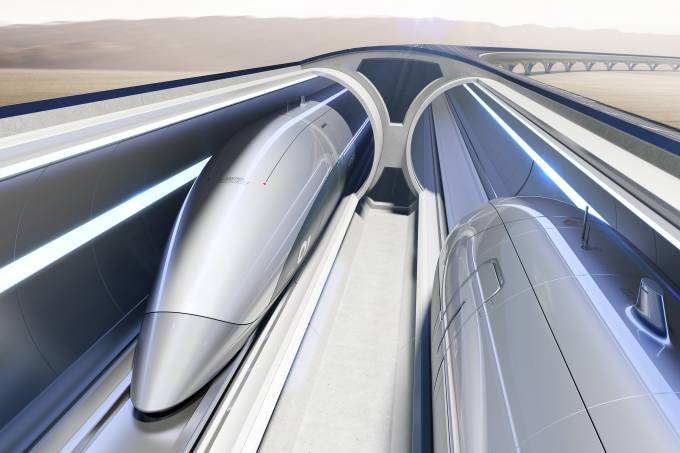RIO DE JANEIRO, BRAZIL – HyperloopTT has completed the first feasibility study for its ultrafast capsule transportation system, which aims to connect Porto Alegre to the Serra Gaúcha (Gaucho Highlands) mountain range in less than 20 minutes.
The project in partnership with the Rio Grande do Sul State Government and UFRGS (Federal University of Rio Grande do Sul) foresees R$2 billion (US$385 million) in savings in the South of Brazil, in addition to the opening of 10,000 jobs annually in the region.
According to information from HyperloopTT, due to the savings achieved, the route operator should realize a financial return in a record 14 years. Announced in February, the study considered a period of 5 years for the system to be implemented, which will have a route 135 kilometers (84 miles) long. Currently, the route by car takes approximately 2 hours – this time is expected to drop to 19 minutes and 45 seconds at a top speed of 835 km/h.
Tremendous benefits are expected, not only for local residents, but also for tourism.
The total implementation cost plus operating costs and taxes over the next 30 years amounts to US$7.71 billion. However, the study indicates that this investment could be recovered in the first 5 years, mostly through passenger revenue (52%).
Other sources of revenue include enterprises (35%), store rentals at stations (2%), advertising (2%), and freight transport (1%). The project does not require government subsidies, and the company interested in undertaking it should make a profit in 14 years, with a full return.
During the construction period alone, the system should create 50,000 direct jobs in the building sector. In addition, 9,243 direct and indirect jobs and 2,077 opportunities in the Solar Energy sector are foreseen annually, for at least 30 years. The study found that revenues will exceed project costs by 31%.
BENEFITS FOR REAL ESTATE AND SUSTAINABILITY
The region’s real estate sector could also benefit, as land surrounding the ultrafast transportation system stations is expected to increase in value by R$27.4 billion after 6 years of operation.
Due to the system’s nature, which transports people and cargo in moving capsules in a high-pressure, frictionless environment, some 2,000 traffic accidents are expected to be prevented in 30 years, 67 with fatalities, 1,203 with injuries, and 6,551 with only property damage.
According to the HyperloopTT proposal, the modal would be powered by renewable energy – photovoltaic panels would be installed on 80% of the route between Porto Alegre and the Serra Gaúcha mountain range, taking into account sections where technical and geographical limitations may prevent the equipment from being installed.
With a potential annual energy production of 339 GWh and consumption of 73 GWh, the system could produce almost four times more energy, and would be self-sufficient in this respect.
The study estimates that approximately 95,000 tons of CO2 will be prevented from reaching the atmosphere. Furthermore, the planned route reduces the need for complex construction work to mitigate the environmental impact, according to the company.


